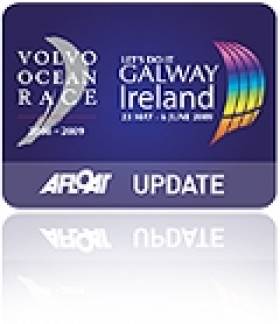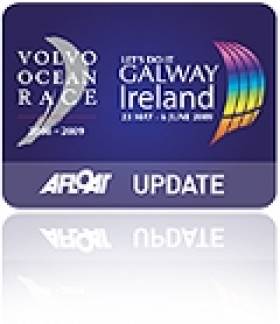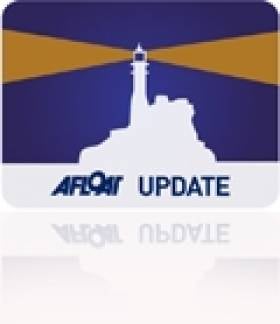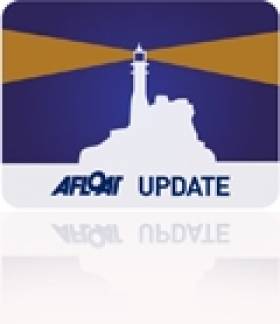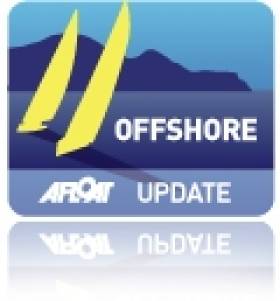Displaying items by tag: Yachting
Changing Media Horizons for Sailing Journalists – YJA
Barry Pickthall, the former yachting correspondent to The Times and Sunday Times newspapers, has been elected Chairman of the Yachting Journalist's Association which represents the interests of some 250 specialist media from as far afield as Ireland, Australia, Caribbean, China, Europe, Gulf States, New Zealand, Singapore, South Africa, and USA.
Barry takes over during challenging times for marine media with both the number of traditional magazine titles and circulation figures dipping, pay rates stagnating and the demand for copyright free pictures and footage on the increase.
It is not all bad news. Web sites and digital advertising are flourishing and demand for good video footage on the increase. TV viewing is also changing fast with viewers becoming much more selective over what they watch, using catch-up services rather than video recorders to view programmes they miss.
"The sport, and the way we present and watch it, is changing so fast that unless we adapt, we run the risk of being side-lined altogether." Says Barry Pickthall. "Journalists not only need to be masters of the pen, but produce good image and video content to promote what they have written, and for photographers and video cameramen, the role is reversed."
YJA members are being invited to provide valuable work experience for graduates, and the Association will be promoting their work in a competition to encourage budding media stars to get themselves in print.
In another major initiative, the YJA is also planning to introduce a new competition to promote the work of existing members to a world-wide audience.
The YJA has also refined its membership rules to allow Advertising and PR executives within the marine industry to join as associate members in order to widen the sphere and influence of the Association.
Membership of the Yachting Journalists' Association costs £40 per year and includes an Internationally recognised Press Card, a listing on the YJA website highlighting your specialist skills and contact details, and many other benefits.
Oyster World Rally Launches This Weekend
#Oyster - A fleet of 27 yachts from North America, South Africa and Western Europe - including Ireland - will take part in the 2013 Oyster World Rally, which sets off from Antigua in the West Indies tomorrow (6 January).
Celebrating the 40th anniversary of the sailing brand, the launch from Nelson's Dockyard will mark the start of a "16-month odyssey of endless adventure" that will take the fleet all the way round the world via more than 30 ports of call.
After passing through the Panama Canal and into the Pacific, the rally will stop at the the Galapagos Islands, Marquesas, Tahiti, Bora Bora and Moorea.
From there the fleet will head to the Great Barrier Reef, round the top of Australia, partying in Bali and heading west for Cape Town in time for next Christmas, then on to Brazil for next year's carnival, before joining up for a final grand party with the Oyster Caribbean Regatta in April 2014.
And the Irish will be in the thick of the action, via the Oyster 885 'Lush' owned by Formula 1 pundit and sailing convert Eddie Jordan.
Oyster World Rally event manager Debbie Johnson said: “It is very exciting to finally be in Antigua getting ready for the start.
"So many sailors dream of sailing around the world and the camaraderie throughout the fleet is just fantastic."
Follow the progress of the fleet as the rally gets under way via the official website HERE.
Yachting Seasickness Survey Surprise as Two-Thirds Take Ill
#SEASICKNESS - A surprising 62% of crew members on board yachts taking part in the Global Challenge experienced seasickness at least once along the 27,000-mile route.
Those are the findings of a survey undertaken by Yachting World of the 223 crew involved in the latest edition of the wrong-way-round-the-world race, as magazine Yachting Monthly reports.
The survey focused on the penultimate leg of the race from Boston to La Rochelle in France. The majority of crew were declared to have no prior disposition to seasickness and were allocated on boats by various other criteria, making the results a "reflection of susceptibility among the population at large".
The results were staggering, with almost two-thirds of crew experiencing seasickness. Though the figures were mostly evenly distributed across the fleet, on one boat the vast majority of those on board were seasick.
Factors that appear to influence the rate of seasickness include age (those older than the peak age of 24 were less susceptible), gender (more women then men were seasick on average) and wind angle (seasickness was less common on downwind stretches).
The sample survey shows that 84% of crew were able to carry on working despite being seasick, but the remaining 16% - localised to a small number of boats - were incapacitated by vomiting and dry-heaving. Recovery time, however, was quick, with even the worst cases improvsing within five days.
Yachting Monthly has much more on the story HERE.
Irish Sailors Get Ready for First VOR In-Port Races
The first of the in-port races ahead of the Volvo Ocean Race start tomorrow in Alicante – and top Irish sailors are among the six teams competing.
Wexford’s Justin Slattery is on Abu Dhabi Ocean Racing, which is competing in the race for the first time.
Skipper Ian Walker told Sail World: "Everything is ready and we can’t wait to line up against the other teams... The forecast is for strong breeze on Saturday so there will be extra pressure on the crew to get it right."
The team has another Ireland connection in its commercial director David Hassett, a veteran of the Irish yachting scene and backer of Ireland's Green Dragon team in the 2009 race.
Elsewhere, Kerryman Damian Foxall is a watch leader on Groupama, captained by debuting VOR skipper Franck Cammas - who last month received one of France's most prestigious sporting honours.
Meanwhile, the Chinese entry Team Sanya, which is part sponsored by Discover Ireland, is hoping skipper Mike Sanderson - who took Telefónica Blue to the podium at every stage in the 2009-09 race - can repeat his past successes.
In-port races take place in all 10 host ports along the 39,000-nautical-mile route, and as they account for more than 20% of the points, no team will be taking them easy.
As previously reported on Afloat.ie, a delegation from Galway - hosts of the final stage of the race next summer - will be in Spain for a week of events beginning tomorrow ahead of the start of the race proper on 5 November.
Sail World has more on the story HERE.
VOR Skipper Cammas Receives French Sporting Honour
Volvo Ocean Race skipper Franck Cammas has been presented with one of France’s most prestigious sporting honours.
The man in charge of the Groupama sailing team was awarded the Grand Prix de l’Académie des Sports in Paris recently, recognising his achievements in sailing in 2010.
These included his skippering of the 100ft trimaran Groupama 3 non-stop around the world in a record-breaking in 48 days, 7 hours, 44 minutes and 52 seconds.
Cammas is only the fifth sailor to be presented with the award, following Whitbread Round the World Race skipper Eric Tabarly, 1983 America’s Cup winner John Bertrand, solo sailor Isabelle Autissier and Alinghi team principal Ernesto Bertarelli.
But Cammas isn't resting on his laurels, as he's currently preparing with his team to compete in the next Volvo Ocean Race kicking off next month.
He will lead a crew of 11 sailors - including Kerryman Damian Foxall - on the 70ft monohull Volvo Open 70 Groupama 4 in the 39,000 nautical mile race, which is set to conclude in Galway next summer and will also involve Wexford sailor Justin Slattery, who is in the crew for Team Abu Dhabi.
The action starts in Alicante, Spain on 29 October with the first in-port race. The first leg to Cape Town then begins on 5 November.
Key Yachting Issue Their Fastnet Top Twenty
The Key Yachting Fastnet Top Twenty – Grand Soleil 43 Codiam straight in at Number One
For those who love the Fastnet Race, and for many it is the highlight of the offshore season, the 2011 race has delivered on all counts. It has proved a hugely tactical race and competitors have fought for speed in a whole variety of conditions from 30 knots of breeze through to what was almost a complete shut-down in the pressure. Extraordinarily frightening for for some, gut wrenchingly frustrating for others, incredibly rewarding for those who got it right and extremely high-stress for many of the thousands and thousands of ‘virtual spectators’ who have spent the last five days perched on the edge of their office chairs watching the thrills and spills of the race online, whilst the UK economy grinds slowly upwind against the tide.
The fleet this year numbered well over 300 boats, one of the largest race entries on record. Of these, clients of Key Yachting, racing their J Boats and Grand Soleils made up a significant proportion, both in the fully crewed IRC Classes and also in the Double-Handed Class. Of course enormous credit is bestowed by the team at Key Yachting upon each and every skipper and crew member who arrived on the startline last Sunday to take part, irrespective of their choice of craft. However, one simply cannot fail but notice just how well the Js and Grand Soleils performed overall.
The huge numbers of entries, the massive variance in the type of craft taking part and the disparate sailing experience across the competing crews means that everyone who take part in this epic race can consider themselves a winner. Reviewing the race would be a dream job for any political spin doctor; it just depends on the angle of one’s approach. So, for our purposes here, let’s look at the top twenty overall. That’s the first twenty boats of the entire 300+ fleet under the most widely employed rating system in the world, IRC. In this top twenty, the number of Js and Grand Soleils was six, or put another way, 33% of the top twenty best performing crews in the Fastnet Race were sailing a J Boat or a Grand Soleil.
Topping the Key Yachting Fastnet Leaderboard is Codiam, the Grand Soleil 43 OT of Monsieurs Loday and Nicoleau. Codiam was seventh overall under IRC, the best performing Grand Soleil in the race and they won Class IRC 1. This is a formidable racing team and this also happens to be their second consecutive win in IRC Class 1 on the Fastnet: they also took the bullet here in 2009. It’s hard enough to win, but even harder to do it twice. This is an absolutely amazing result.
The J/122 Nutmeg IV, owned and raced by Francois Lognone and his crew were the top J Boat overall in the Fastnet 2011. Another seasoned offshore campaigner, this is a well deserved and hard fought result for the French skipper and crew of this forty footer. Eighth overall translates to third in their class: IRC 2.
The Grand Soleil 43 OT, Quokka 8, the current UK IRC National Champion (having achieved eight straight wins around-the-cans back in July) used the Fastnet Race to prove that these beautiful Italian yachts are far more than one-trick ponies. Can they win inshore? Yes they can. How do they do offshore? Very well indeed: Quokka 8 was tenth overall in the Fastnet this year, a result which is all the more commendable because she was being sailed under charter by Philip Falle and his team from Sailing Logic. What a cracking job they did!
Another J/122, Neil Kipling’s Joopster crossed the finish line in very good shape indeed and dug straight in to the overall scores in fourteenth place, Yves Grosjeans’s bright red forty-three foot J/133 Jivaro was just a few steps behind in eighteenth place overall and Chaz Ivill’s Grand Soleil 54 John B closed the Key Yachting Fastnet Top Twenty.
Record-Breaking Conditions Ahead for Fastnet Race
The largest, most diverse fleet of racing boats ever in offshore yachting set sail this morning in the Rolex Fastnet Race.
The biennial flagship event of the Royal Ocean Racing Club, a tradition since 1925, will take the fleet some 608 miles from Cowes on the Isle of Wight along the UK's south coast and across the Celtc Sea to Fastnet Rock off the Cork coastline, before returning past the Scilly Isles to the finish line at Plymouth.
An incredible 318 yachts are competing this year and they come in all shapes and sizes, from the 40m trimaran Maxi Banque Populaire to the 9.1m Rogers 30, Brightwork.
The majority of the fleet will be racing under the IRC for the Fastnet Challenge Cup, won by the crew that sails best to their rating. The weather will play a big part in this, as a fast start and slow finish favours bigger boats - so far today looks to be the opposite.
The 45-55 foot boats will surely provide the most competitive action, with past Fastnet winner Piet Vroon piloting his championship-leading Ker 46 Tonnere de Breskens towards another victory.
Fans of the Volvo Ocean Race will also be watching the race live tracker intently today, as this is one of the only times many of the competitors will line up together before the start of the round-the-world yachting challenge.
Regatta News has more on the story HERE.
Match Racing Challenge Hot Seat a Pricey Gift
You could be in the hot seat at next month's International Match Racing Challenge - provided you'e got €200 to spend.
The top-level entertainment package for the Royal St George Yacht Club's second annual event, set for the weekend of 23-24 July, will put yacht racing fans on board with a team "experiencing the thrills and tension of the race as it happens along with the competitors".
A spectator package - which will set fans back €100 - gives a bird's-eye view of all the racing in Scotsman's Bay "as well as the added bonus of firing the starting gun", according to the RSGYC.
The second International Match Race Challenge will see Ireland’s top six match racing teams go head to head against a world team consisting of six international crews from France, Germany, Australia, New Zealand and the UK. Ireland will be hoping to avenge their 36-29 loss to the world at last year's inaugural event.
Match racing involves head-to-head racing between two identical boats over short 20 minute courses, with each boat having four crew members. At the end of the competition and after approximately 90 races, there will be an overall individual winner. In addition, the combined scores of the six Irish teams and the six international teams will deliver an overall team winner.
Package One
THE HOT SEAT
€200 per person
Experience the thrills and tension of the race as it happens aboard!
12:00 Meet and Greet in Club
12:30 Race Briefing and Intro to the Event
12:45 Light Lunch
13:30 Trip on Yacht around Dublin Bay
14:30 Arrive at Spectator area to watch racing
15:00 Hot Seat Race
16:15 Return to shore
16:30 BBQ and Drinks
Hot Seaters need to be prepared to get wet and be active!
Package Two
PURE SPECTATOR
€100 per person
Get a Bird's Eye view of all the action!
12:00 Meet and Greet in Club
12:30 Race Briefing and Intro to the Event
12:45 Light Lunch
13:30 Trip on Yacht around Dublin Bay
14:30 Arrive at Spectator area to watch racing
15:00 Step on Board the Starter's Boat and fire the Starting Gun
16:00 Return to shore
16:30 BBQ and Drinks
Hard-Working Vessels Keep Lights Switched-On
Sailing was not the only activity that took place in Dublin Bay last Saturday as the Northern Lighthouse Board's (NLB) multi-function tender NLV Pharos was busy at work, writes Jehan Ashmore.
The NLB is the Scottish equivalent of the Commissioners of Irish Lights (CIL) and it is not unusual for such vessels to share work duties beyond their respective jurisdictions. The 84m NLV Pharos is equipped with dynamic positioning and a 30-tonne main crane on her 300m2 aft-deck.
Overall she is similar in appearance to Irish lights ILV Granuaile which is based out of Dun Laoghaire. The Irish Lights tender built in Romania in 2000 tends to operate more often off the west coast during the summer months due to the more favourable weather conditions.
The 1,300 (dwt) deadweight tonnes NLV Pharos yesterday returned to her base in Oban from her Irish duties. The west coast base was established in 1904 and is also homeport to the service's smaller NLV Pole Star which is equipped with an 18-tonne crane on her 90m2 aft deck.
The facility in 2000 underwent a £4.2 million redevelopment to turn a buoy yard into a multi functional support base which is computer-linked to the NLB headquarters in Edinburgh.
In addition Trinity House which maintains the service for England and Wales operate the tenders THV Galtea,THV Patricia and the fast-response craft THV Alert from their base in Harwich.
Trinity House forms the trio of the General Lighthouse Authorities (GLA) alongside NLB and CIL. Each member of the GLA co-operate in the allocation of vessel-tender deployment.
Asides the varied and critical role of the tasks performed by the GLA's tenders, they are also available for charter to third parties. Between them the tenders can conduct buoy and chain work, search and rescue, lighthouse re-fuelling, salvage and recovery, towing, hydrographic applications and ROV work.
Captains Discuss Yachting's Future
For the future of yachting, look to the east - so says a roundtable of yacht captains hosted by The Triton.
"You've got to follow the money," said one captain at the open discussion. "And right now, the money is coming from Russia, China and South East Asia."
The group lamented that the influx of 'new money' among those buying boats has seen a loss of yachting traditions among owners, and an emphasis on status and interior style over boating performance.
One new skipper suggested that it was the captain's duty to teach novice owners about the traditions of yachting - such as just relaxing and enjoying the experience, rather than keeping to a strict schedule of activities.
Other trends the captains pinpointed for yachting's future include smaller crews with greater certification.
The Triton has more on the story HERE.































